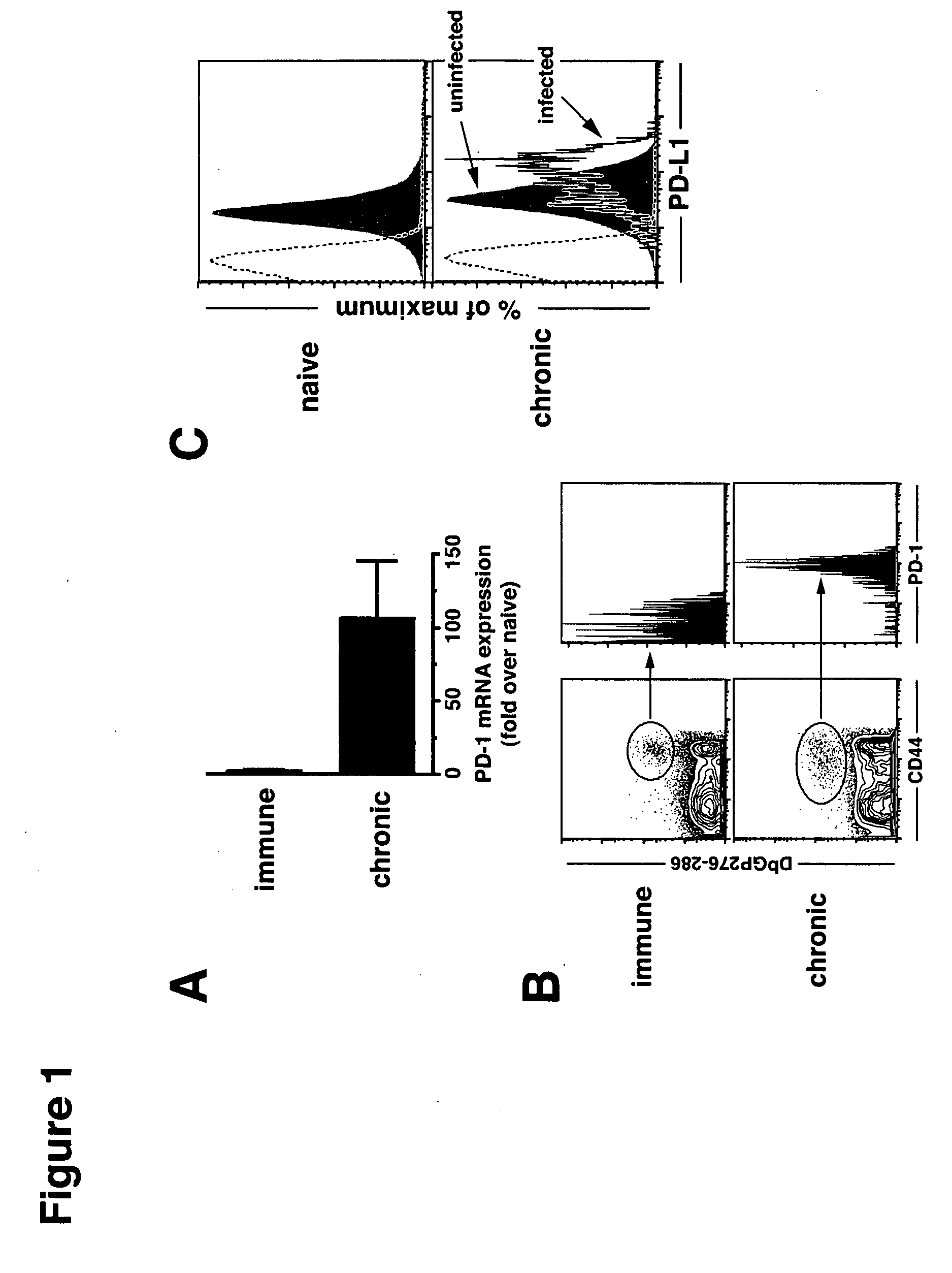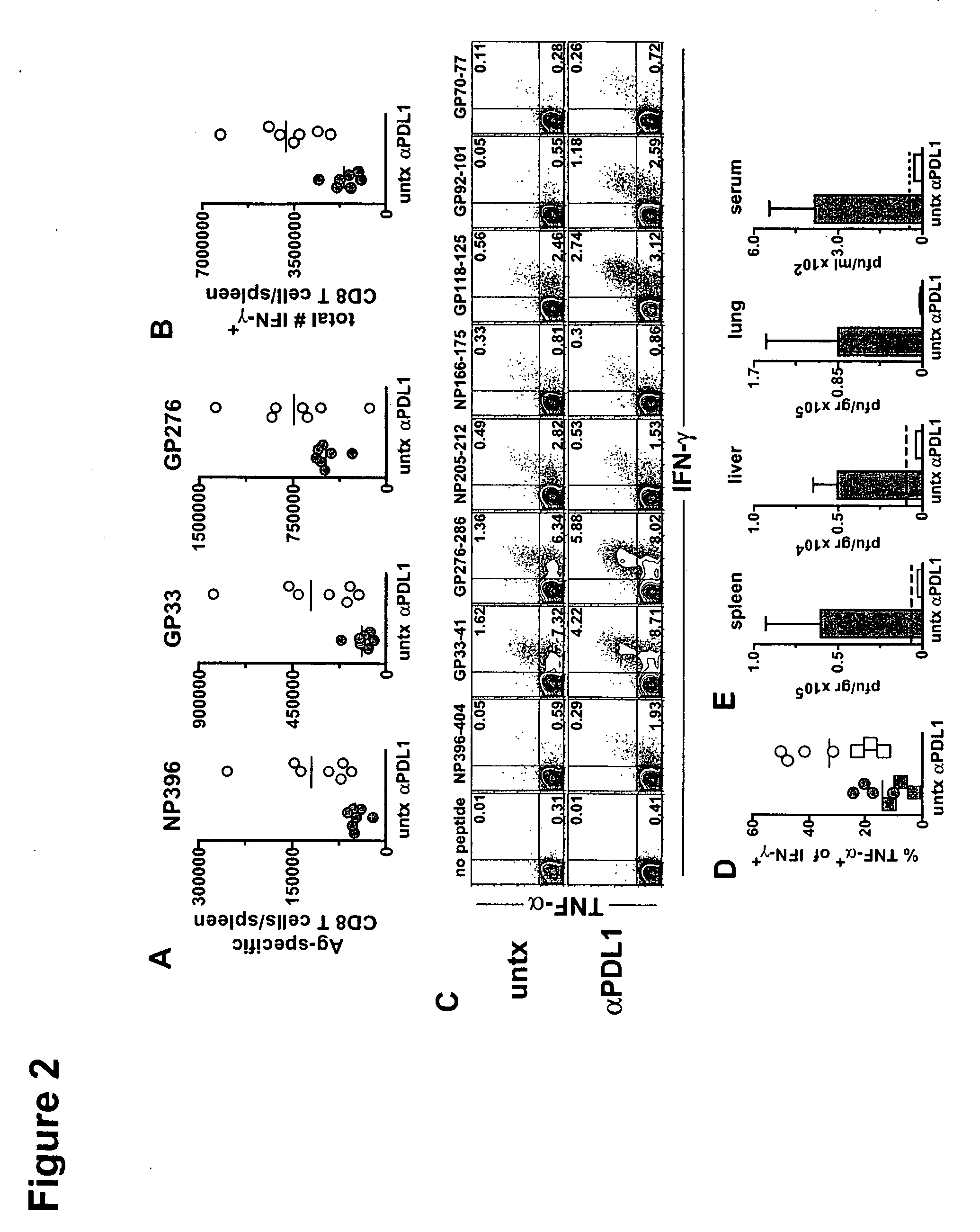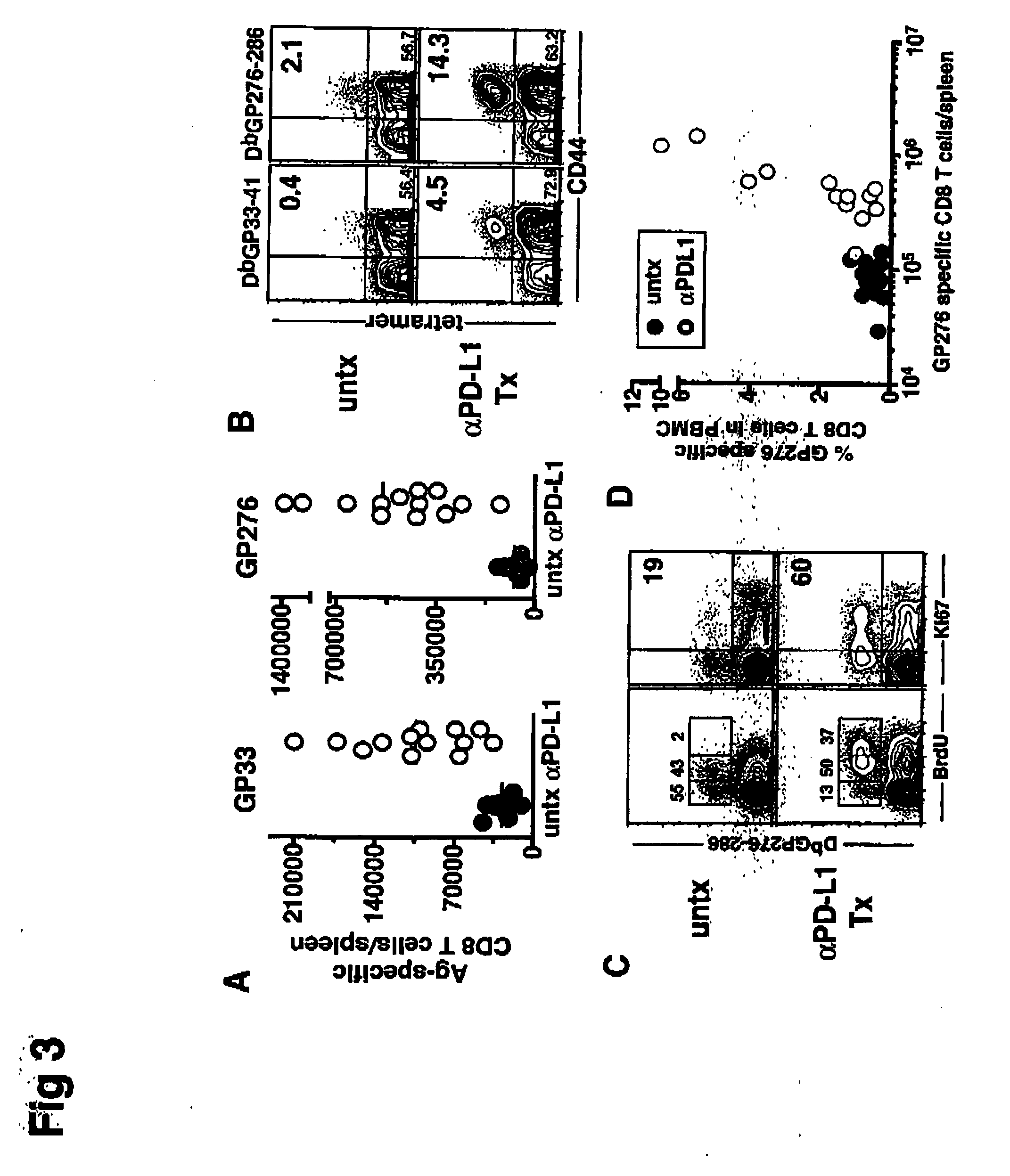Methods and compositions for the treatment of persistent infections
a technology for persistent infections and compositions, applied in the field of methods and compositions for the treatment of persistent infections and cancer, can solve the problems of insufficient infection clearing, limited success of such vaccines against persistent infections caused by viruses such as hepatitis c viruses, and reduced mortality rate, so as to reduce expression or activity, the immune response specific to the infectious agent is enhanced.
- Summary
- Abstract
- Description
- Claims
- Application Information
AI Technical Summary
Benefits of technology
Problems solved by technology
Method used
Image
Examples
example 1
Inhibition of the PD-1 Pathway in Chronically-Infected Mice Using Anti-PD-L1 Antibodies
[0161] Mice infected with various strains of the lymphocytic choriomeningitis virus (LCMV) were used to study the effect of chronic viral infection on CD8+ T cell function. The LCMV Armstrong strain causes an acute infection that is cleared within 8 days, leaving behind a long-lived population of highly functional, resting memory CD8+ T cells. The LCMV Cl-13 strain, in contrast, establishes a persistent infection in the host, characterized by a viremia that lasts up to 3 months. The virus remains in some tissues indefinitely and antigen specific CD8+ T cells become functionally impaired. DbNP396-404 CD8+ T cells are physically deleted, while DbGP33-41 and DbGP276-286 CD8+ T cells persist but lose the ability to proliferate or secrete anti-viral cytokines, such as IFN-γ and TNF-α.
[0162] C57BL / 6 mice were purchased from the National Cancer Institute (Frederick, M D). Mice were infected i.v. with 2...
example 2
Administration of Anti-viral Vaccine and PD-1 Inhibitor
[0171] One approach for boosting T cell responses during a persistent infection is therapeutic vaccination. The rationale for this approach is that endogenous antigens may not be presented in an optimal or immunogenic manner during chronic viral infection and that providing antigen in the form of a vaccine may provide a more effective stimulus for virus-specific T and B cells. Using the chronic LCMV model, mice were administered a recombinant vaccinia virus expressing the LCMV GP33 epitope as a therapeutic vaccine (VVGP33), which resulted in a modest enhancement of CD8+ T cell responses in some chronically infected mice Four out of the nine chronically infected mice that received the therapeutic vaccine showed a positive response while none of the control mice had a significant increase in the immune response against GP33. When this therapeutic vaccination was combined with a PD-L1 inhibitor, LCMV specific T cell responses were...
example 3
Inhibition of the PD-1 Pathway in Chronically-Infected Mice Using PD-1 RNAi
[0172] RNA interference (RNAi) is capable of silencing gene expression in mammalian cells. Long double stranded RNAS (dsRNAs) are introduced into cells and are next processed into smaller, silencing RNAs (siRNAs) that target specific mRNA molecules or a small group of mRNAs. This technology is particularly useful in situations where antibodies are not functional. For example, RNAi may be employed in a situation in which unique splice variants produce soluble forms of PD-1 and CTLA-4.
[0173] PD-1 silencer RNAs are inserted into a commercially available siRNA expression vector, such as pSilencer™ expression vectors or adenoviral vectors (Ambion, Austin, Tex.). These vectors are then contacted with target exhausted T cells in vivo or ex vivo (See, Example 4).
PUM
| Property | Measurement | Unit |
|---|---|---|
| temperature | aaaaa | aaaaa |
| pH | aaaaa | aaaaa |
| pH | aaaaa | aaaaa |
Abstract
Description
Claims
Application Information
 Login to View More
Login to View More - R&D
- Intellectual Property
- Life Sciences
- Materials
- Tech Scout
- Unparalleled Data Quality
- Higher Quality Content
- 60% Fewer Hallucinations
Browse by: Latest US Patents, China's latest patents, Technical Efficacy Thesaurus, Application Domain, Technology Topic, Popular Technical Reports.
© 2025 PatSnap. All rights reserved.Legal|Privacy policy|Modern Slavery Act Transparency Statement|Sitemap|About US| Contact US: help@patsnap.com



